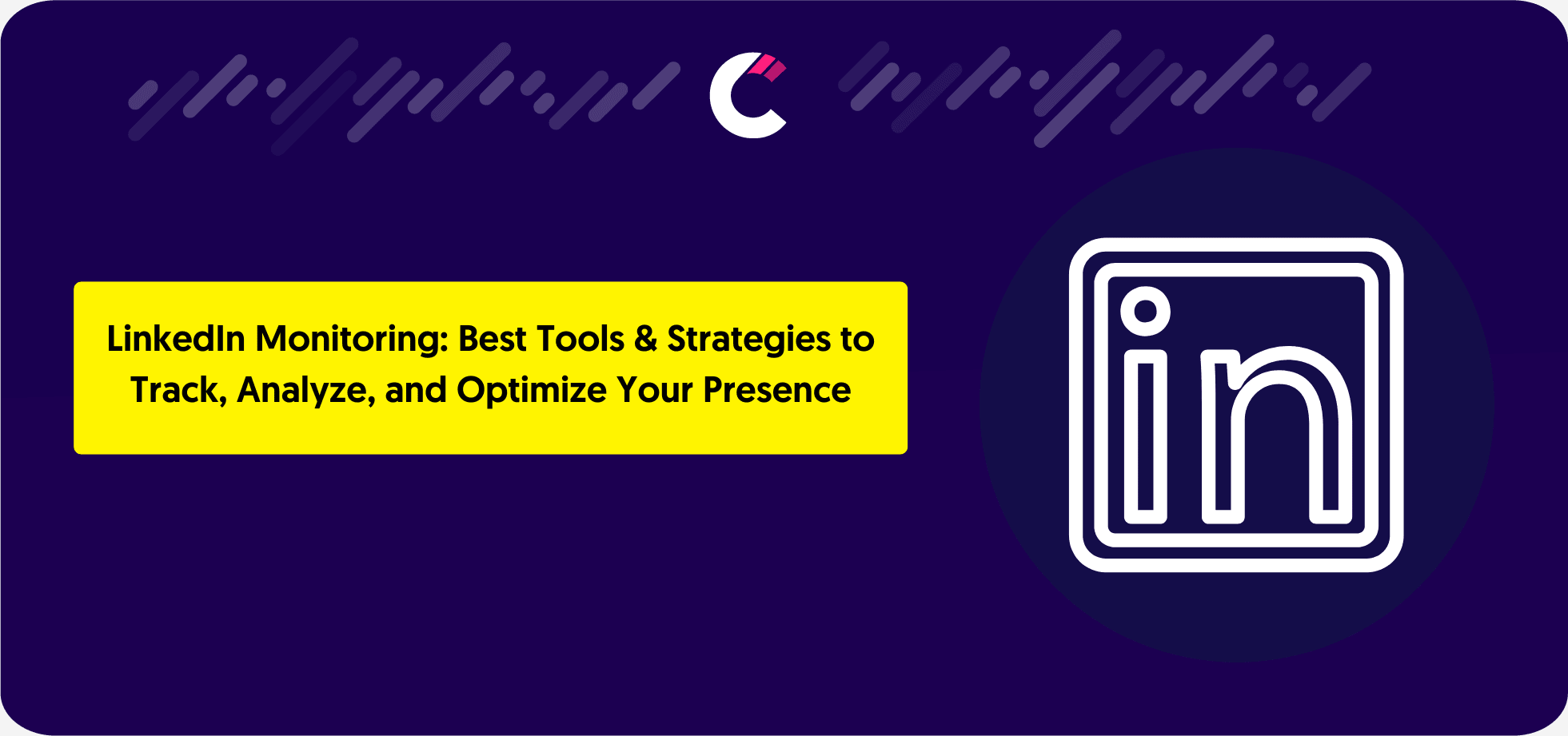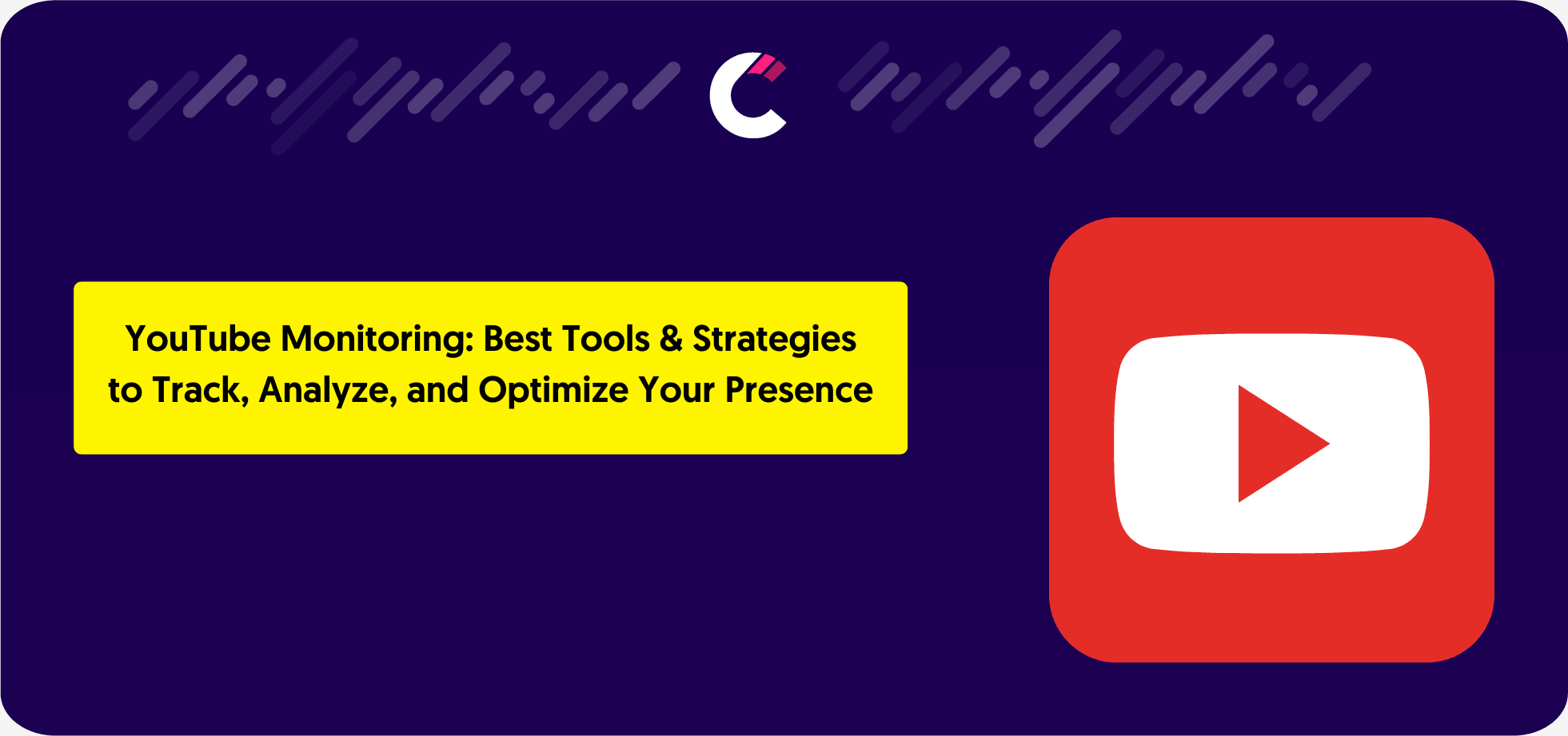Marketing reporting is crucial for any business aiming to make data-driven decisions and maximize its marketing impact. With the right insights, teams can track their performance, fine-tune strategies, and effectively allocate budgets for the highest ROI.
This guide will cover the essentials of building, analyzing, and optimizing marketing reports, from setting objectives to choosing the right KPIs and using tools like Competitors App to gain an edge. Whether you’re looking to improve internal reporting or get a clearer view of competitors’ moves, this guide has you covered.
What is Marketing Reporting?
Marketing reporting refers to the process of collecting, analyzing, and presenting data from various marketing activities to understand and measure the effectiveness of campaigns. By breaking down performance metrics and identifying trends, marketing reports give teams the information they need to make informed decisions, adjust strategies, and improve overall return on investment (ROI).
From tracking customer engagement to assessing the effectiveness of different channels, marketing reports play an essential role in pinpointing what works and where there’s room for improvement. At its core, the purpose of marketing reporting is to ensure that every marketing effort drives value.
The Key Elements of an Effective Marketing Report
An effective marketing report is built on three main elements:
- Key Performance Indicators (KPIs): KPIs are critical metrics that measure the success of a marketing campaign, such as conversion rates, customer acquisition costs, and engagement levels. Choosing the right KPIs ensures the report focuses on the most impactful data.
- Data Visualization: Visual elements like charts, graphs, and dashboards help transform raw data into a more digestible format. Effective visuals make it easier for stakeholders to identify patterns and key insights at a glance.
- Actionable Insights: An effective report doesn’t just present numbers—it interprets them to provide forward-looking insights. By highlighting trends and offering recommendations, the report guides future marketing strategies and helps teams make informed adjustments. For instance, insights from a monthly report can directly influence strategy shifts for the following quarter, ensuring continuous improvement across campaigns.
Types of Marketing Reports
Marketing reports vary by purpose and focus, allowing teams to assess performance from different angles. Here’s a breakdown of the main types:

Periodic Reports
Daily Reports: Capture short-term trends and performance fluctuations.
Weekly Reports: Summarize weekly activities and identify emerging trends.
Monthly Reports: Offer insights into long-term patterns and inform monthly strategy adjustments.
Quarterly and Annual Reports: Provide a comprehensive view of progress over several months or the entire year, helping shape strategic decisions for the future.

Channel-Specific Reports
SEO & SEM Reports: Track keyword rankings, search visibility, and ad performance.
Social Media Marketing Reports: Monitor follower growth, engagement rates, and post reach across platforms.
Email Marketing Reports: Measure open rates, click-through rates, and conversions from email campaigns.
E-commerce Reports: Focus on online sales, tracking metrics like cart abandonment, average order value, and conversion rates.

Performance-Specific Reports
Revenue Reports: Track revenue generated through various channels.
Traffic Reports: Measure website visits and sources to assess engagement.
Engagement Reports: Analyze user interactions with content across channels.
Lead Generation and Conversion Reports: Focus on metrics related to lead acquisition and conversion rates.
How to Build Your Marketing Reports Step-by-Step
Step 1: Set Up Your Competitors App Account
Begin your journey by setting up an account with Competitors App. Take advantage of the 15-day free trial to explore the full range of features. This trial period allows you to monitor up to 10 competitors, giving you a comprehensive view of their online marketing strategies. You’ll gain insights into their main keywords, the ads and creatives they’re using, and much more.

Step 2: Add Your Competitors
The next step is to add your competitors are. If youCompetitors App uses AI to assist in identifying who your competitors are. Additionally, you can draw inspiration from other sources such as G2 or Capterra to broaden your understanding of your competitive environment. This step is vital in ensuring that you are monitoring the right competitors who are directly impacting your market space.

Step 3: Select Metrics to Monitor
After setting up Competitors App, focus on the specific digital metrics relevant to your industry and business goals. Key metrics might include competitors’ website traffic, search engine rankings, social media engagement, content performance, and digital ad campaigns. These metrics help you understand how your competitors are performing online, giving you insights into their digital marketing strategies, SEO efforts, and customer engagement tactics. Tracking these areas will provide a clear view of their digital footprint and help you identify opportunities to improve your own online presence.
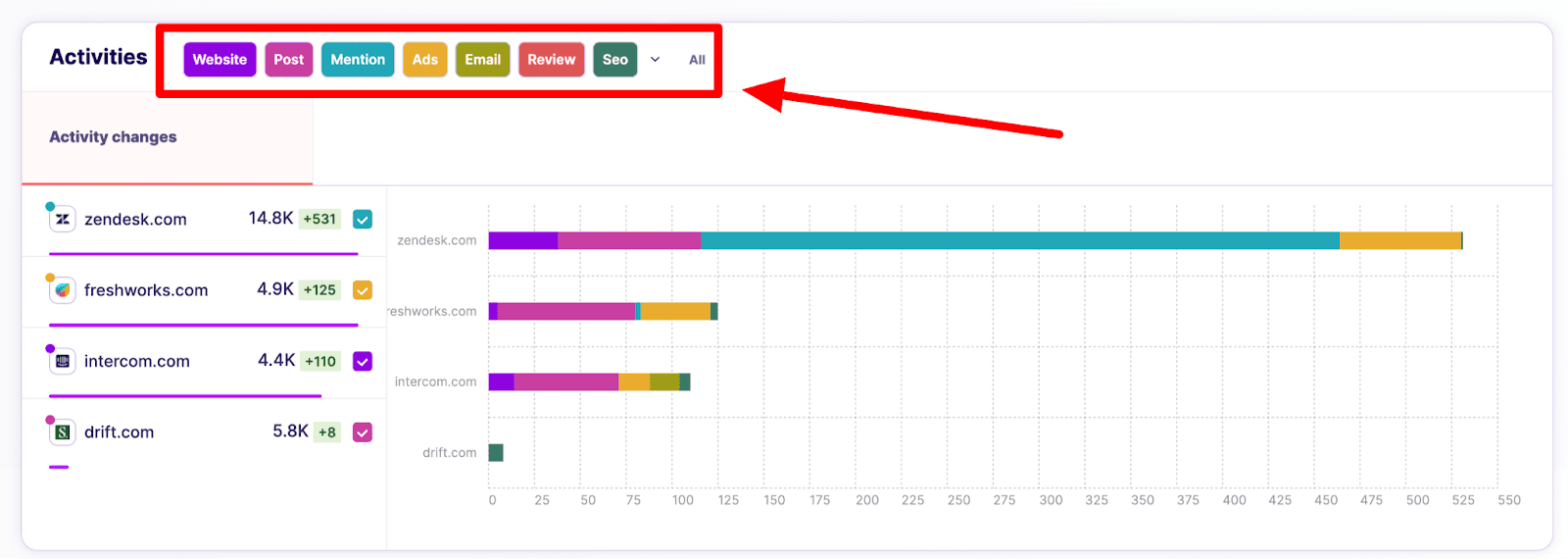
Step 4: Gather and Organize Data
Competitors App simplifies the process of gathering digital data by automatically collecting information from competitors’ websites, social media accounts, and online ads. This tool organizes the data into clear visual reports, allowing you to easily track metrics like keyword rankings, social media follower growth, and ad spend. By having all this data in one place, your competitor analysis dashboard becomes a powerful resource for quickly analyzing competitors’ digital strategies and adapting your own accordingly.
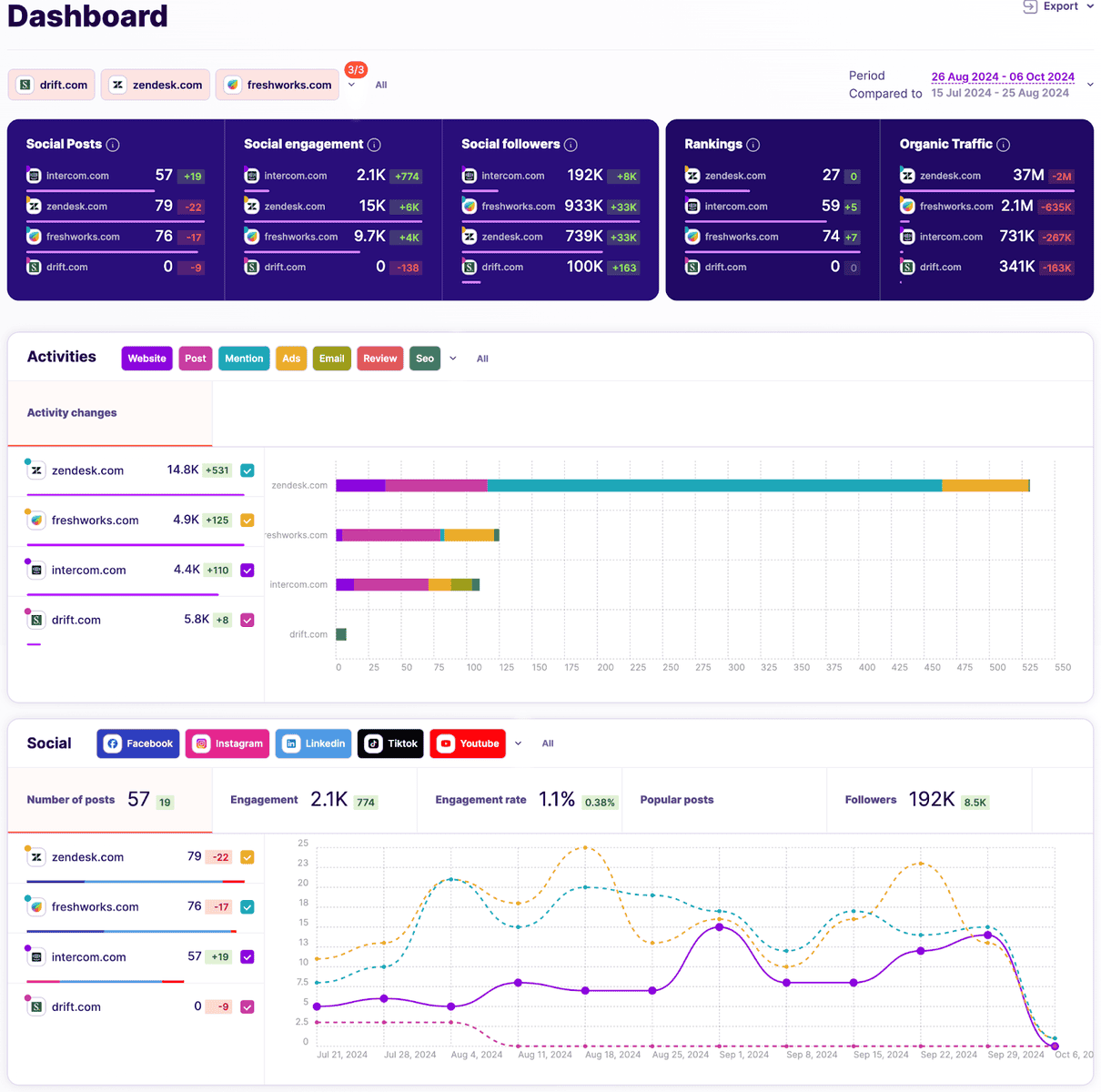
Step 5: Customize Your Dashboard
Once you’ve gathered the relevant data through Competitors App, the next step is to customize your marketing reporting dashboard. Tailor it to display the digital metrics that matter most to your business, such as SEO performance, social media engagement, and paid ad campaigns.
Use charts, graphs, and tables to visualize these insights clearly, so you can quickly assess competitor movements and trends. Customization allows you to prioritize the most actionable data, ensuring that your team can make informed decisions based on the most impactful digital activities of your competitors.
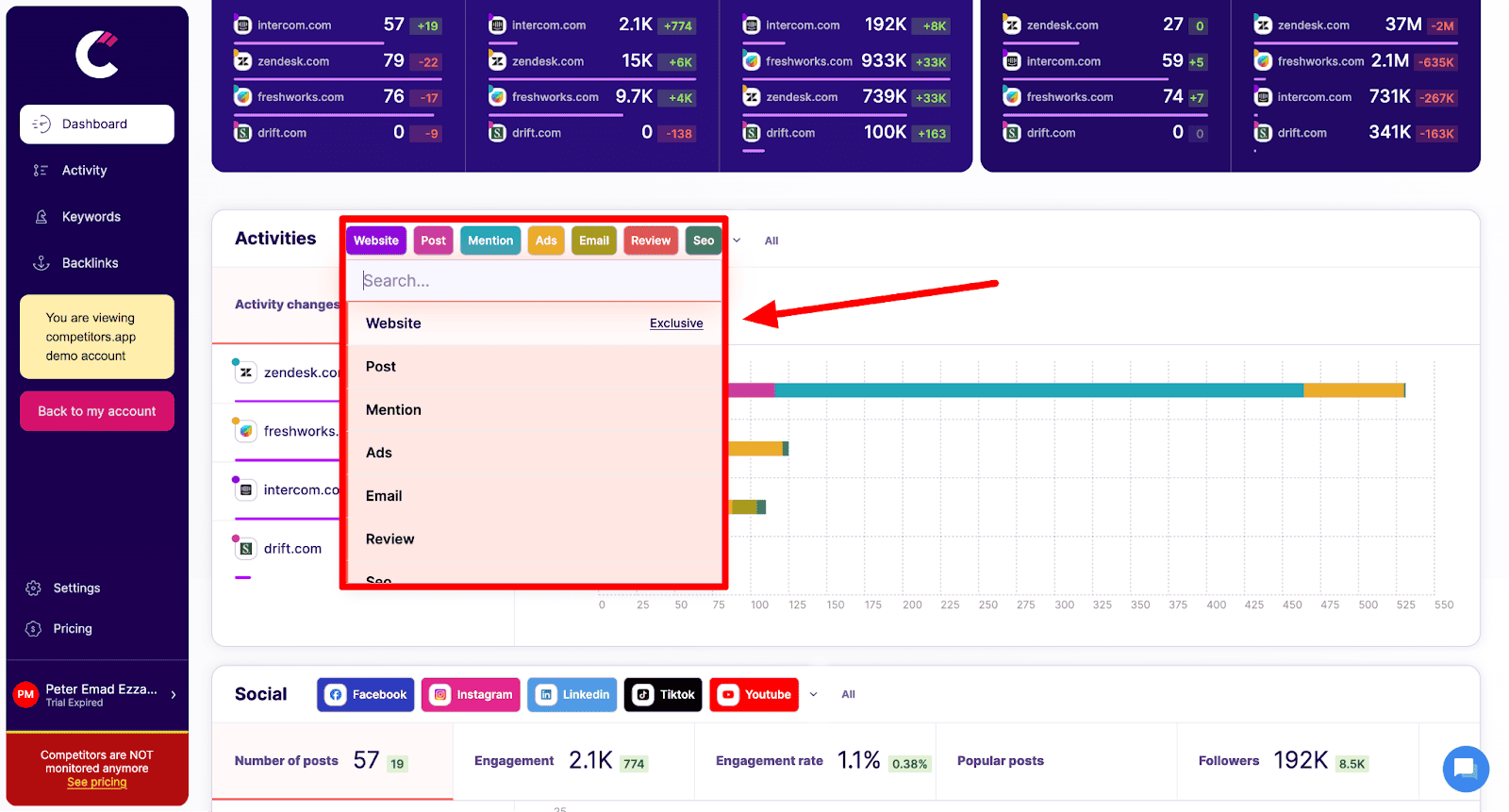
For example, here’s how you can filter to only see website changes or whatever category you’d like to focus on.
Step 6: Regularly Update and Maintain Your Dashboard
A marketing reporting dashboard is only effective if it stays current. Fortunately, with Competitors App, the dashboard is automatically updated on a weekly basis, ensuring you always have the latest insights without needing to manually refresh the data.
This automation keeps you informed of any shifts in your competitors’ digital strategies, such as changes in SEO performance, social media engagement, or ad campaigns. Regular reviews of your dashboard will help you adapt your strategies quickly, ensuring you’re always equipped with up-to-date information to stay competitive.
White-Label Marketing Reporting Options
White-label marketing reports are a great way for agencies and teams to present polished, branded reports that reflect their professional identity. White-label options allow businesses to customize reports with logos, brand colors, and headers, providing a seamless and cohesive look that strengthens client relationships and reinforces brand credibility. Here’s how white-label reporting can enhance your presentation:
- Brand Consistency: Adding custom logos, headers, footers, and color schemes helps maintain a consistent brand image, making reports look cohesive and professional.
- Client-Centric Customization: White-label reports enable agencies to create personalized reports tailored to each client, ensuring that each report speaks directly to the client’s goals and metrics.
- Enhanced Professionalism: Branded, customized reports are more polished and can improve client perceptions, showing that the agency or marketing team has a thoughtful, organized approach to tracking performance.
- Competitors App White-Labeling: Competitors App offers white-labeling options, allowing teams to create branded reports that monitor competitor activities, from website changes to SEO and social media performance. These tailored reports can help agencies present valuable insights with a polished, professional touch.

White Label Feature in Competitors App
Marketing KPIs and Metrics to Include
Choosing the right KPIs (Key Performance Indicators) and metrics is essential for building a marketing report that provides actionable insights. Here are some of the most valuable metrics to consider, depending on your goals and channels:
- Web Analytics Metrics: These metrics focus on website performance and user engagement. Key metrics include traffic volume, session duration, and bounce rate, each offering insights into user behavior on your website and overall engagement.
- SEO Metrics: Tracking SEO metrics helps assess visibility in search engines. Essential SEO KPIs include keyword rankings, organic traffic, and the number of backlinks. These metrics can indicate how well your content performs in search results and highlight areas for improvement.
- Social Media Metrics: Social media engagement metrics are crucial for evaluating brand reach and interaction. Metrics like engagement rate, follower growth, and post performance reveal which content resonates with audiences on different platforms.
- Email Marketing Metrics: To measure email marketing effectiveness, track open rate, click-through rate, and conversion rate. These metrics provide insights into how well your emails engage readers and drive desired actions, such as visits to a landing page or conversions.
- Competitors App Metrics: Competitors App offers metrics that track competitor activities, such as website updates, keyword movements, and ad campaigns. These insights enable teams to benchmark their performance against competitors and quickly respond to market shifts.
Common Challenges in Marketing Reporting and How to Overcome Them
Marketing reporting often comes with obstacles that can hinder clear and effective analysis. Here are some of the most common challenges and strategies to address them:
- Data Overload: With numerous metrics available, it’s easy to feel overwhelmed. To overcome this, focus on the most relevant KPIs that align with your business goals. Simplifying data selection keeps the report concise and targeted.
- Inconsistent Metrics Across Channels: When metrics are measured differently across platforms, comparisons can become confusing. Standardize key definitions and metrics to ensure consistency in reporting, making data more meaningful and comparable.
- Time Constraints: Manually gathering and analyzing data can be time-consuming. Automating the data collection process through tools like Competitors App reduces time spent on repetitive tasks, allowing marketers to focus on analyzing insights rather than collecting numbers.
- Presenting Data to Non-Technical Audiences: Translating complex data into easily understandable insights is essential, especially for stakeholders without a technical background. Using simple language, clear visuals, and summaries ensures that the report resonates with everyone, regardless of technical expertise.
Frequently Asked Questions (FAQ) About Marketing Reporting
What is marketing reporting, and why is it important?
Marketing reporting involves collecting, analyzing, and presenting data on marketing activities and performance. It's important because it helps teams understand how well their strategies are working, make data-driven decisions, and optimize efforts for better results.
What should a marketing report include?
A comprehensive marketing report should include key performance indicators (KPIs), relevant metrics, visualizations, campaign summaries, audience engagement insights, and any trends that could influence future strategies. It’s essential to tailor the report to your specific goals and audience.
How often should I generate marketing reports?
The frequency of marketing reports varies depending on the audience and goals. Common intervals include daily for quick updates, weekly or monthly for regular performance tracking, and quarterly or annually for strategic reviews.
What are the main types of marketing reports?
Main types include:
- Periodic Reports (daily, weekly, monthly, quarterly)
- Channel-Specific Reports (SEO, social media, email)
- Performance-Based Reports (lead generation, conversion)
- Custom Reports for unique KPIs and objectives.
How can Competitors App help in marketing reporting?
Competitors App enables you to monitor and report on competitors' activities by tracking changes in SEO keywords, website updates, social media performance, and ad campaigns. This data can be valuable for benchmarking your performance and uncovering new opportunities.
What are the most important KPIs to track in marketing reports?
Common KPIs include:
- Website Metrics: Traffic, session duration, bounce rate.
- SEO Metrics: Keyword rankings, backlinks.
- Social Media Metrics: Engagement rate, follower growth.
- Email Metrics: Open rate, click-through rate.
- Competitor Metrics: Through Competitors App, you can track competitors’ keywords, ad strategies, and content performance.
How can I make my marketing reports more actionable?
Focus on clear, actionable insights that address specific goals. Highlight trends, suggest next steps, and prioritize the data that’s most relevant to your objectives. Use visuals to make key points easy to understand.
What are common challenges in marketing reporting?
Challenges include data overload, inconsistent metrics, interpreting data for non-technical stakeholders, and time constraints. Tools like Competitors App can help by automating competitor data collection, enabling you to focus on analysis rather than data gathering.
How can I automate my marketing reporting?
Many tools, including Competitors App, offer automation features that pull data from multiple sources, integrate it into dashboards, and schedule reports. Automation saves time and ensures consistency in data tracking.
Can I create white-label reports for clients?
Yes, many marketing tools offer white-labeling options, allowing you to customize reports with your branding. In Competitors App, for example, you can create branded reports that include your logo, colors, and custom layouts.
What are future trends in marketing reporting?
Future trends include predictive analytics, which uses historical data to forecast future trends; increased personalization of reports for specific stakeholders; and enhanced integration of data from multiple channels, creating more unified dashboards.

